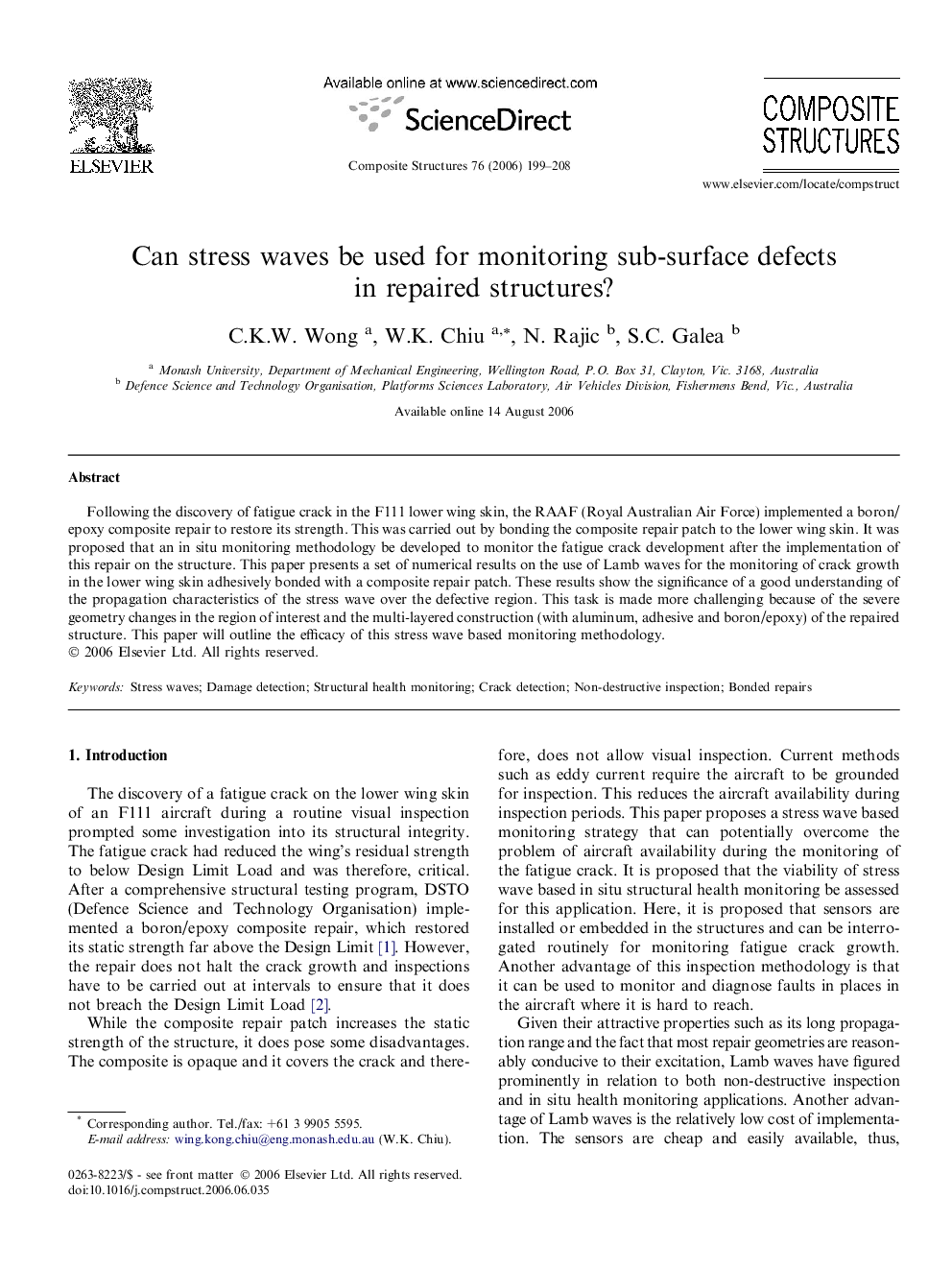| کد مقاله | کد نشریه | سال انتشار | مقاله انگلیسی | نسخه تمام متن |
|---|---|---|---|---|
| 254256 | 503056 | 2006 | 10 صفحه PDF | دانلود رایگان |

Following the discovery of fatigue crack in the F111 lower wing skin, the RAAF (Royal Australian Air Force) implemented a boron/epoxy composite repair to restore its strength. This was carried out by bonding the composite repair patch to the lower wing skin. It was proposed that an in situ monitoring methodology be developed to monitor the fatigue crack development after the implementation of this repair on the structure. This paper presents a set of numerical results on the use of Lamb waves for the monitoring of crack growth in the lower wing skin adhesively bonded with a composite repair patch. These results show the significance of a good understanding of the propagation characteristics of the stress wave over the defective region. This task is made more challenging because of the severe geometry changes in the region of interest and the multi-layered construction (with aluminum, adhesive and boron/epoxy) of the repaired structure. This paper will outline the efficacy of this stress wave based monitoring methodology.
Journal: Composite Structures - Volume 76, Issue 3, November 2006, Pages 199–208